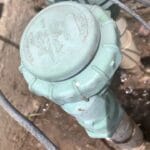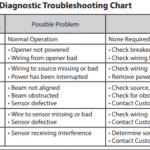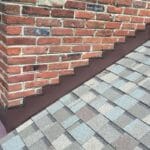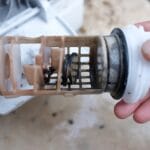Picture this: you’re standing in your kitchen, ready to tackle the day’s meal prep, when you notice something off. Your kitchen sink isn’t draining, yet there’s no obvious clog.
It’s a frustrating mystery that leaves you scratching your head. You’ve tried plunging, running hot water, and even poked around with a coat hanger, but nothing seems to work. You might start wondering if you need to call in a professional.
But before you do, there are a few things you can check right now to potentially solve the problem yourself. What if I told you that the solution to your draining dilemma could be simpler than you think? From overlooked air gaps to hidden obstructions, there are several sneaky culprits that might be causing your sink to misbehave. As you read further, you’ll discover practical tips and easy fixes that could save you time, money, and a whole lot of stress. Let’s dive in and unravel the mystery of your kitchen sink’s stubborn refusal to drain. You’re just a few steps away from restoring order in your kitchen!

Credit: www.youtube.com
Common Reasons For Non-draining Sinks
A kitchen sink that won’t drain can be frustrating. Sometimes, the problem isn’t a clog. Understanding the common reasons can help you fix it. Let’s explore some usual causes of non-draining sinks.
Airlock Issues
Airlocks can block water flow in pipes. They happen when air gets trapped. This trapped air creates pressure. It stops water from moving smoothly. Releasing the air can solve the problem.
Incorrect Pipe Installation
Pipes need proper installation. Incorrect installation affects water flow. Misaligned pipes or wrong angles can cause issues. Check if the pipes align well. Correcting this can improve drainage.
Ventilation Problems
Proper ventilation helps water drain. A blocked vent can stop this process. It leads to slow drainage or no drainage. Ensure vents are clear and working. This can restore normal water flow.
Faulty Garbage Disposal
A garbage disposal can affect drainage. If it’s faulty, it might not grind waste properly. This can block the pipes. Regular maintenance and checks help avoid this issue. Make sure it’s functioning well.

Credit: www.reddit.com
Diagnosing The Problem
Sometimes a kitchen sink won’t drain, but isn’t clogged. This can puzzle many homeowners. Identifying the root cause is essential. It saves time and prevents future issues. Let’s explore ways to diagnose this problem effectively.
Listening For Unusual Sounds
Listen closely to the sink. Is there gurgling or bubbling? These sounds might indicate a blockage further down the line. Or a problem with air circulation. Unusual noises can reveal hidden issues. They provide clues about what might be wrong.
Checking Pipe Connections
Inspect the pipes under the sink. Are they tightly connected? Loose pipes can cause draining issues. Water might escape through gaps. This leads to slow drainage or no drainage. Ensure all connections are secure. Properly aligned pipes ensure smooth flow.
Examining The Vent System
Look at the vent system. It’s crucial for airflow. A blocked vent can affect drainage. It causes negative pressure. This prevents water from flowing correctly. Check for obstructions in vents. Clear any debris for optimal function.
Tools And Materials Needed
Fixing a kitchen sink that won’t drain can be puzzling. Especially when it’s not clogged. Having the right tools and materials helps solve the problem efficiently. This section covers essential items needed for the task.
Basic Plumbing Tools
Plumber’s wrench and pliers are vital. They grip and twist pipes securely. A pipe snake or auger probes deeper blockages. A bucket collects water and debris during repairs. Use a flashlight to inspect dark areas.
Safety Gear
Protective gloves safeguard your hands from sharp edges. Safety goggles shield your eyes from splashes. Knee pads offer comfort while working under the sink. A mask can prevent inhaling dust or mold.
Replacement Parts
Sometimes, parts need replacing. Rubber washers ensure tight seals. A new P-trap may be required. Check for leaks in the old one. Drain stoppers prevent items from falling into the drain. Have extra screws and bolts on hand.
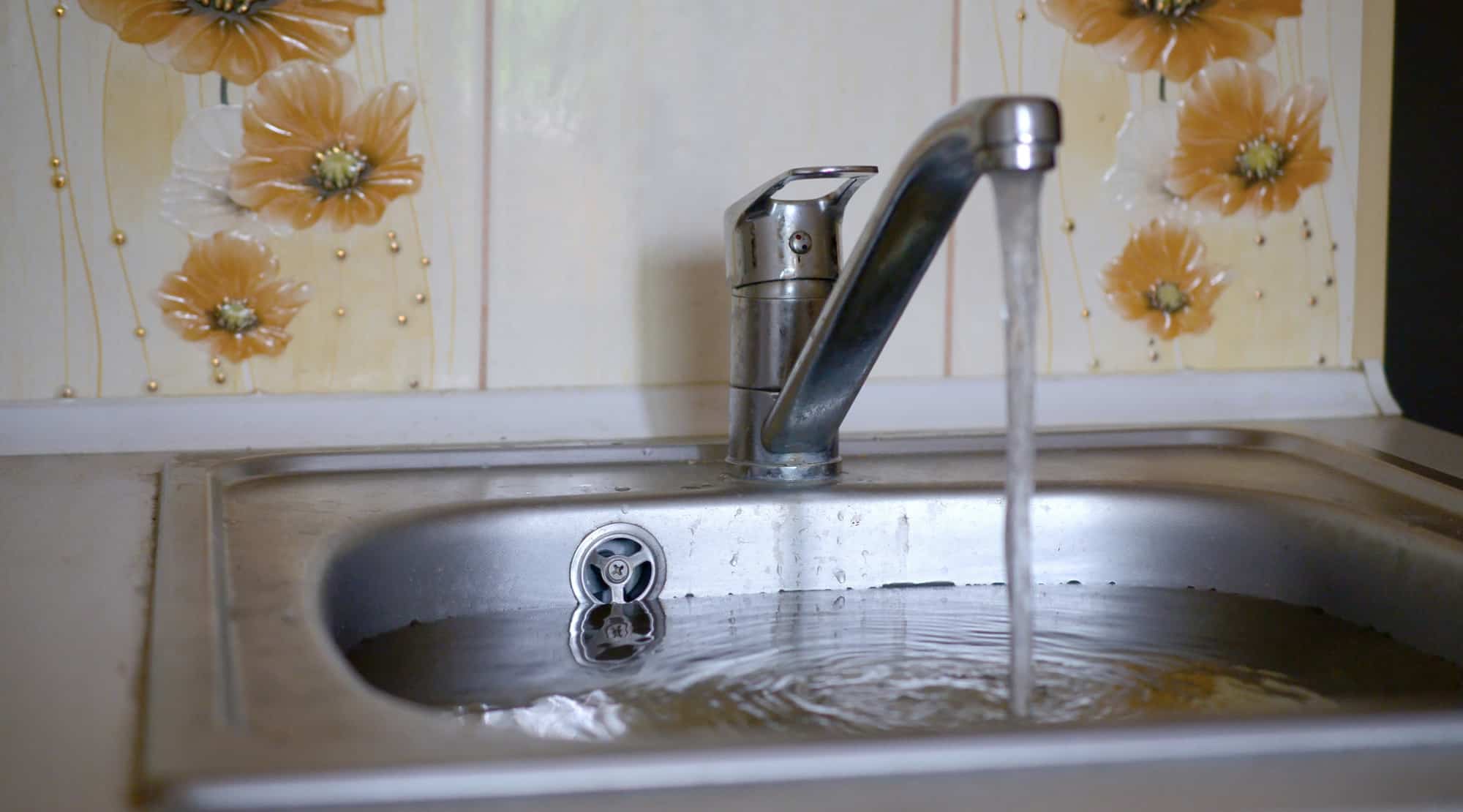
Credit: mytrustedexpert.com
Step-by-step Troubleshooting
Your kitchen sink isn’t draining, yet it’s not clogged? It’s a puzzling scenario that many homeowners face. The good news is, there’s a logical way to troubleshoot this issue. By systematically examining potential causes, you can pinpoint the problem and restore your sink’s functionality. Let’s dive into a step-by-step troubleshooting guide to get your sink back in working order.
Inspecting The Airlock
An airlock might be the culprit behind your sink’s drainage issue. Airlocks occur when air gets trapped in the plumbing, preventing water from flowing smoothly. To check for an airlock, try filling your sink with a bit of water and then use a plunger.
Plunge gently to see if this dislodges any trapped air. If you notice the water starting to drain, you’ve likely found the problem. Have you ever considered that a simple tool like a plunger could solve this issue?
Verifying Pipe Alignment
Misaligned pipes can also hinder water flow. Check underneath your sink to ensure that all pipes are securely and properly connected. Loose or misaligned pipes can create a bottleneck, slowing down drainage.
If you find any loose connections, tighten them with your hands. How often do we overlook these simple checks that could save us a plumber’s visit?
Assessing Garbage Disposal Functionality
Sometimes, the garbage disposal is the root of the problem. Ensure that it’s working correctly by turning it on and listening for any unusual noises. If it’s humming but not grinding, it might be jammed.
Try resetting it using the button at the bottom of the unit. Also, inspect for any visible obstructions or debris. Have you ever thought about how much we rely on this appliance without regular maintenance checks?
Tackling these steps can often resolve the mystery of a non-draining, non-clogged sink. By addressing each aspect, you can identify and fix the issue without unnecessary stress. What other troubleshooting methods have worked for you in the past?
Professional Help Vs. Diy Solutions
Facing a kitchen sink that won’t drain can be frustrating. Sometimes, the issue isn’t a clog, but deeper plumbing problems. Hiring a professional ensures precise diagnosis and efficient repair, while DIY methods might provide temporary relief. Choose wisely to save time and avoid future issues.
When your kitchen sink won’t drain, it doesn’t always mean a clog. Sometimes, the problem runs deeper. You might wonder whether to tackle it yourself or call a professional. Both options have their pros and cons. Knowing when to choose DIY or professional help can save time and money. Below, explore the advantages and challenges of each choice.When To Call A Plumber
A plumber can help when DIY methods fail. Persistent drainage issues might indicate bigger problems. If water backs up or drains slowly, call for professional help. Strange noises or foul smells require expert attention. A plumber can diagnose underlying issues. They use advanced tools to find and fix problems. Their expertise ensures long-term solutions.Cost Considerations
Hiring a plumber can be costly. Labor charges and materials add up quickly. Emergency visits may incur extra fees. Compare this with DIY solutions. DIY can be cheaper but may not always fix the problem. Consider the cost of tools and materials for DIY. Balance cost with potential benefits. Choose wisely based on budget and severity.Diy Tips For Minor Fixes
Try simple DIY fixes first. Use a plunger to clear minor blockages. Baking soda and vinegar can help with slow drains. Check the P-trap for debris. These methods are inexpensive and easy. They work well for surface issues. Always have basic tools on hand. Maintain regular cleaning to prevent future problems.Preventive Measures
Keep your kitchen sink draining smoothly by regularly cleaning the drain cover. Check for any trapped debris. Use hot water to flush out soap and grease build-up. Avoid pouring oils and food scraps down the drain to prevent future issues.
When your kitchen sink won’t drain but isn’t clogged, it can be puzzling. While the obvious suspect might be a blockage, there are other factors at play. Focusing on preventive measures can help ensure your sink remains functional and efficient. Let’s explore some practical strategies that can save you time and hassle.Regular Maintenance Tips
Regular maintenance is crucial for keeping your sink in top shape. Make a habit of cleaning the sink strainer after every use. This simple step prevents food particles from collecting and causing issues over time. Consider running hot water through your drain weekly. This can help break down any grease buildup. It’s a small effort that can make a big difference.Proper Disposal Usage
Your garbage disposal isn’t a catch-all for kitchen waste. Be mindful of what you put down the drain. Avoid fibrous vegetables, coffee grounds, and eggshells. Instead, dispose of these items in the trash. Using your garbage disposal correctly can prevent unnecessary strain on your plumbing system.Vent System Checks
A less obvious but important aspect of sink maintenance is checking the vent system. A blocked or improperly functioning vent can cause drainage issues. Listen for gurgling sounds when the sink is draining. If you notice anything unusual, it might be time to inspect the vent. You can consult a professional if needed to ensure everything is in working order. Incorporating these preventive measures into your routine can lead to a hassle-free kitchen experience. Have you considered how small changes can impact your daily life? A little effort goes a long way in maintaining a smoothly running kitchen.Frequently Asked Questions
Why Won’t My Kitchen Sink Drain?
Sometimes air locks or improper venting cause drainage issues. Also, check for hidden partial blockages.
How Do I Fix A Slow Draining Sink?
Try using a plunger or drain snake. These tools can clear minor obstructions.
Can Air Pressure Affect Sink Drainage?
Yes, improper air pressure can slow water flow. Check your vent pipes for blockages.
What Are Common Causes Of Slow Sink Drainage?
Grease buildup, debris, or faulty pipes often cause slow drainage in kitchen sinks.
Does Sink Venting Impact Water Flow?
Absolutely. Proper venting ensures smooth water flow and prevents airlocks in plumbing systems.
Conclusion
A kitchen sink that won’t drain can be frustrating. Often, it’s not a clog. Simple fixes like checking the garbage disposal can help. Inspect the P-trap for blockages. Ensure air vents are clear. These steps can solve many drainage issues.
Routine maintenance can prevent future problems. Keep your sink running smoothly. Pay attention to unusual noises or slow draining. Quick action can save time and stress. If issues persist, consider professional help. A well-maintained sink makes kitchen tasks easier. Enjoy a hassle-free kitchen experience with these tips.

